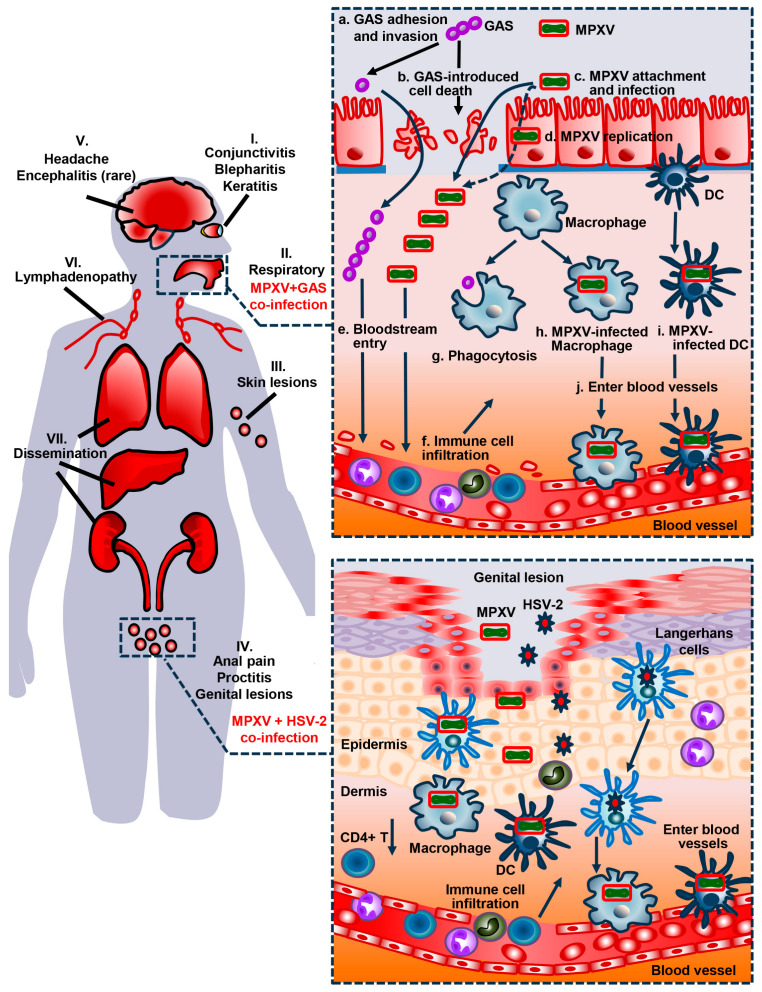Figure 3.
The pathogenesis of human MPXV and its co-infection with group A Streptococcus (GAS) and herpes simplex virus (HSV)-2. (Left) humans get primary MPXV infection via mucosa or skin, thereby leading to primary infection in (I) eye (e.g., conjunctivitis, blepharitis, and keratitis), (II) respiratory system, (III) skin, and (IV) genital sites (e.g., anal pain, proctitis, and genital lesions). (V) MPXV infection can cause neurologic symptoms, e.g., headache and, rarely, encephalitis. MPXV can disseminate via the lymph system and blood vessels, leading to (VI) lymphadenopathy and spreading to (VII) large organs, e.g., lungs, liver, and kidneys. (Upper, right) MPXV and GAS co-infection can be found in the upper respiratory tract. In this scenario, (a) GAS adheres and invades airway epithelial cells such as ciliated cells, and (b) induces cell death. (c) MPXV also attaches and infects ciliated cells, and (d) replicates in the primary infection sites. (e) GAS damages the blood vessel, facilitating entry of GAS and MPXV into the bloodstream. (f) Immune cells in peripheral blood start to infiltrate. (g) Macrophages initiate phagocytosis to engulf GAS. (h,i) Dendritic cells and macrophages can be infected with MPXV, and (j) enter blood vessels. (Bottom, right) MPXV and HSV-2 co-infection can occur in genital lesions, in which both MPXV and HSV-2 invade the genital skin and infect different types of cells, e.g., Langerhans, macrophages, and dendritic cells. The infection can lead to decreased CD4+ T cell count, infiltration of other immune cells, and viral dissemination via blood vessels.

